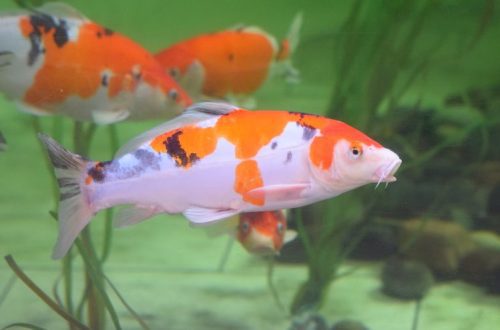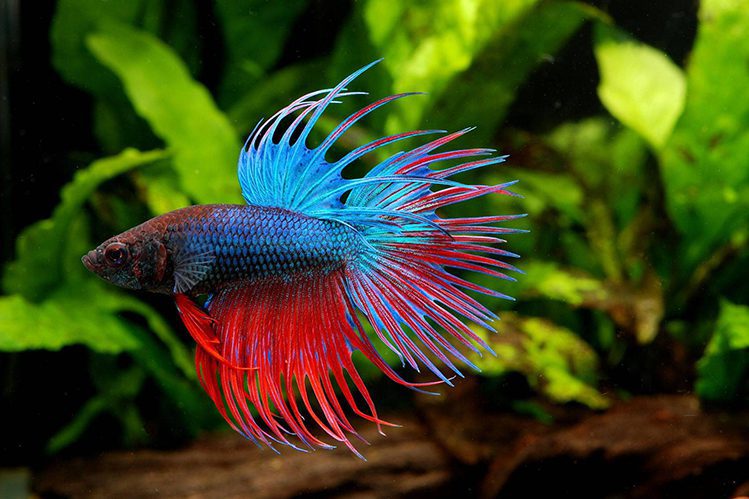
Cockerel fish care and varieties of these fish
The colorful betta fish are popular with aquarists all over the world. They are chosen because of their spectacular appearance and unpretentiousness. But no matter how modest the requirements for keeping cockerel fish are, the owner needs to know and fulfill them. We will list the basic rules for caring for betta fish and talk about the amazing varieties of these aquarium inhabitants.
- Selection and installation of the aquarium.
Fighting fish do not need a spacious, large aquarium. But do not settle a pet in cramped quarters. If you want to get one fish, then a high-quality 1,8-liter aquarium will be enough for her, but if possible, it is better to equip even a single fish with a seven-ten liter aquarium. A popular solution is a compact rounded aquarium. There are options for round containers with a waterfall, there are miniature aquarium protectors with beautiful lighting. There are many models of aquariums on the market, everyone can choose the perfect home for their ward.
Pay attention to the choice of the place where you put the aquarium. Aquadom must be placed out of reach of direct sunlight, away from drafts, radiators, household appliances, doors, noise sources. Fish need a quiet dark secluded corner. Place the aquarium on a flat surface, for stability it does not hurt to put a rubber mat under it.
- We are preparing a home for the cockerel.
The fish must be settled in a prepared aquadom. We choose natural soil – sand or pebbles are suitable. Live plants will not be superfluous, it is better to make a choice in favor of the most unpretentious and safe for fish, such as hornwort or cryptocoryne. The pet will need shelter – a decoration or a cave. Select driftwood and rocks from the pet store to decorate your aquarium. Remember that the decorations found in the park will not work – they can harm the quality of the water in the aquarium and the health of the fish.
It remains to fill the aquarium with water and wait three to four weeks for the necessary biobalance to form in the aquarium. Water conditioners will help prepare the water in the aquarium for settling the fish much faster.
A comfortable temperature for a fighting fish in an aquarium is 25-28 degrees. Water hardness – 5-15, acidity – preferably at the level of 6-8.
- Lighting and water quality.
To make a partial water change, draw tap water in advance and let it stand for two days. If you forgot to prepare the water for the aquarium in advance, water conditioners will again come to the rescue. The smaller the aquarium, the more often you need to do partial water changes. On average, it is enough to change a third of the water once a week. It is better to stock up on drop tests in advance to control the level of nitrogenous compounds.
For a small aquarium with one fighting fish, not too bright lighting, sufficient for plant growth, is suitable. For example, from 0,5 to 0,7 watts per liter. The abundance of sunlight or electric light causes the growth of algae in the aquarium. Optimum lighting in the aquadome is created with the help of fluorescent and LED lamps. In some models of aquariums for betta fish, lighting is already provided.
Maintain cleanliness in the aquarium, immediately remove food debris after feeding the fish. Monitor the condition of your wards, in case of illness, put the sick fish in a separate aquarium and contact a veterinarian.
Water preparation is greatly facilitated by special water conditioners (eg Tetra Betta AquaSafe), which make water suitable and completely safe for fish in seconds. More about this in the article.
- Proper nutrition.
Fighting fish are happy to eat both dry and live food (for example, bloodworms, brine shrimp). It is better to consult with a specialist and choose dry complete food for betta fish, designed specifically for this type of fish. There are diet options with a combination of pellets and bloodworms.
When purchasing a new pack of fish food, check the expiration date and integrity of the packaging. Keep food packaging closed to keep fresh longer. Do not overfeed your aquarium inhabitants. Excess food is harmful to them, but fish will endure slight hunger without problems.

Two male fighting fish should not be placed in the same aquarium, especially a small one. Several females can be placed in one aquadom, they will soon build a hierarchy with the main female and females in the supporting roles.
Before settling your neighbors with cockerel fish, take care of expanding the living space for underwater inhabitants. Many problems arise due to overcrowding in the aquarium. Aggressive territorial fish like cichlids will pretty much ruin the nerves of fighting fish, nothing good will come of it. And shrimps, snails run the risk of being eaten by the fighting fish itself. Who can be hooked to the cockerel fish? Here are some good options:
catfish corridors
plecostomus catfish
ancistrus
cardinals
zebrafish
swordsmen
tetras
iris
parsing
platies
mollies.
When choosing who to hook up with cockerels, consider the coincidence of pets according to the necessary conditions of detention – temperature, hardness and acidity of the water. The newcomer must spend two to three weeks in quarantine before joining the aquarium company. You need to make sure that the neighboring fish are healthy.
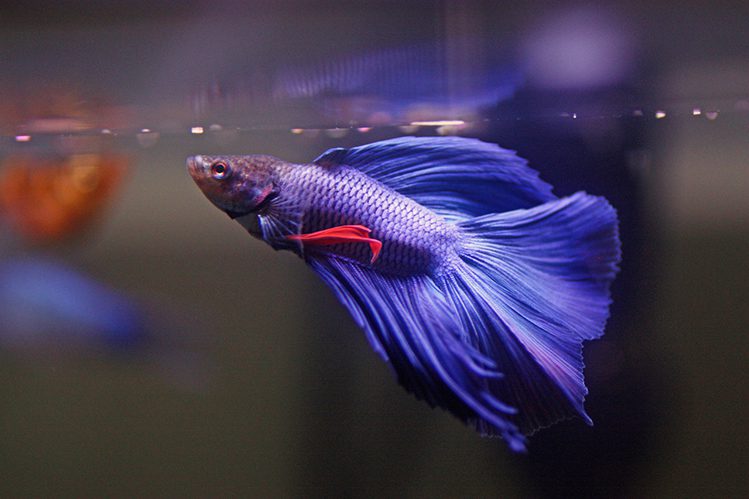
There is an incredible variety of subspecies of fighting fish. The main difference is the appearance, from the shape of the fins to the color, as well as some features in the behavior. Breeders tirelessly bring out new interesting subspecies of fighting fish. When choosing a fish, keep in mind that a pet with wider fins needs a slightly larger aquarium so that your ward can freely swim and turn around without bumping his tail or fin against the walls of the aquarium. Let’s talk about the most interesting subspecies of fighting fish.
the crown-tailed or “Siamese crown” cockerel differs from other subspecies in its large, fan-shaped caudal fin, similar to a crown. It also has an elongated, flexible body and mostly long veiled fins, with females having a smaller body and fins than males. The rays of the caudal fin of crown-tailed bettas protrude far beyond its edges; the membrane between the rays is absent in some places. The Siamese crown cockerel is inactive, lives in all layers of the water, but prefers to stay closer to the surface. There are three types of crown-tailed bettas: with single, double and cross rays on the tail and fins;
- delta and superdelta – note that the delta cockerel with spread fins resembles the symbol of a flying plane. The characteristic rigid setting of the tail is visible, the extreme segments of the tail form an angle of about 130 degrees. The super delta variety can be distinguished from delta bettas by the wider angle of the tail, between 130 and 180 degrees. Ribs in the tail of the delta and superdelta are evenly spaced relative to the central axis of the body;
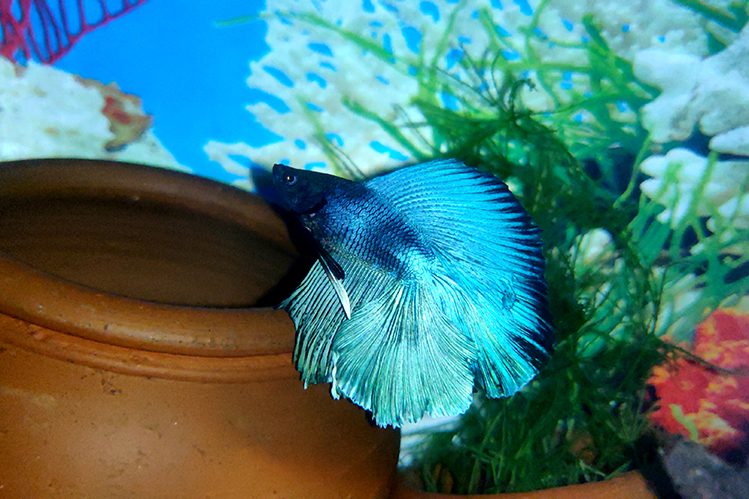
cock of Cambodian color – the body of the fish is very pale, almost white, and the fins are painted bright red or bright green. Contrasting color attracts the attention of aquarium hobbyists;
multi-colored cockerel, multicolor – multi-colored, motley fish. One individual can be painted little by little in several colors. Aquarists choose these fish because they attract with a variety of colors of the rainbow spectrum with different outlines of inclusions;
- two-tailed cockerel – a subspecies of fighting fish with large expressive veil dorsal and pectoral fins and a large rounded veil tail divided into two petals;
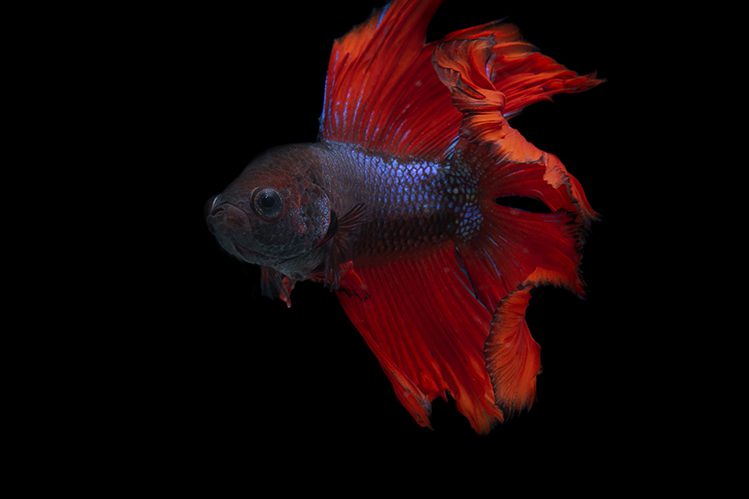
- The blue cockerel is one of the most popular colors. There are monochromatic blue males, there are representatives of the “mask” color – the head of a fighting fish is darker in color than the rest, a uniformly colored body. There is a variation of blue bettas with veil long fins, on their blue scales the head stands out with a dark spot, and the pelvic fins are red.
We are sure that the story about fighting fish did not leave you indifferent. It is possible that soon the beautiful veiled fins of the cockerel fish will surf the expanses of the aquarium in your home.





